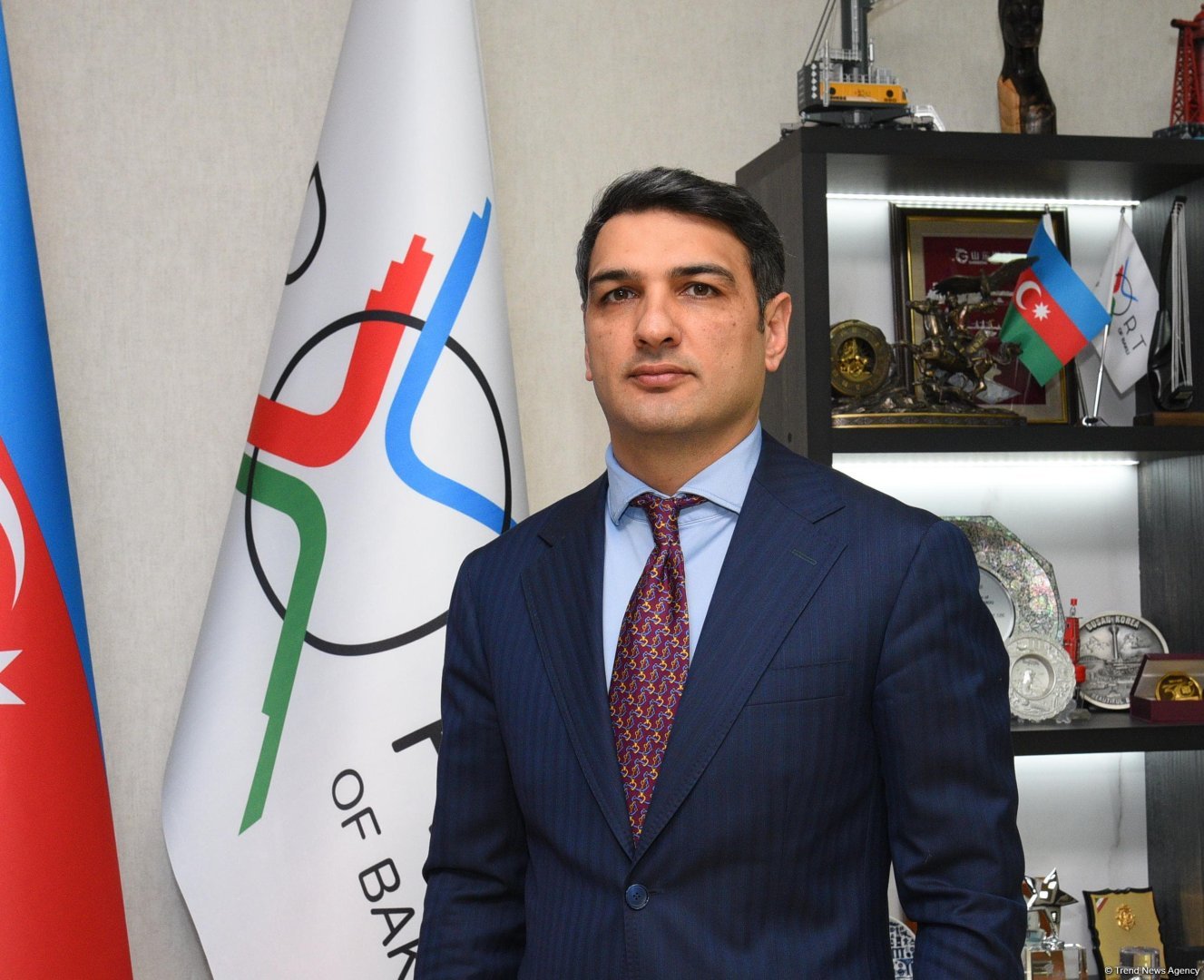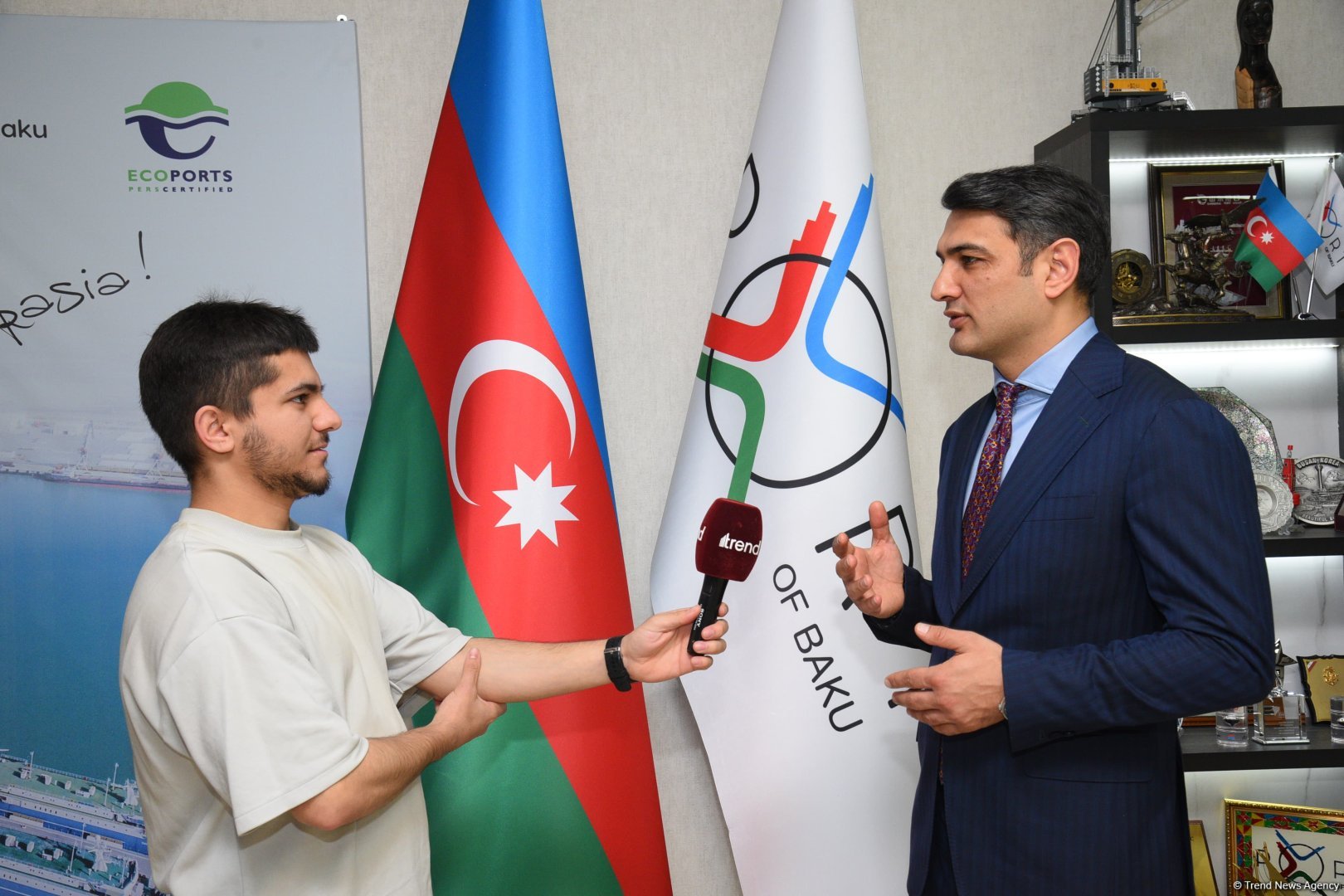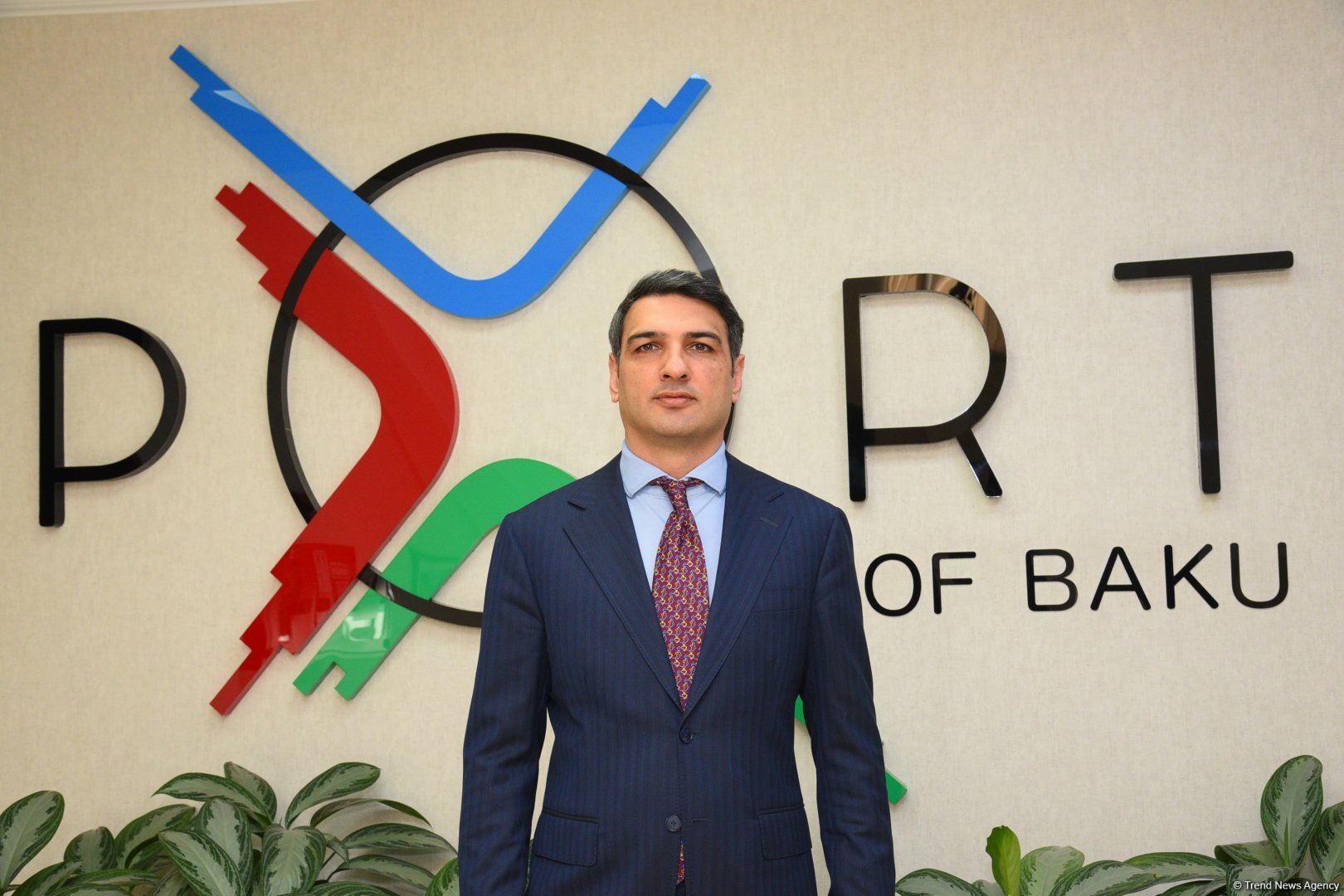BAKU, Azerbaijan, February 4. The cargo turnover at Baku International Sea Trade Port increased last year, reaching 7.6 million tons. The most significant growth was recorded in container transshipment, which surged by 73 percent, said Khudayar Hasanli, Head of the Strategic Planning and Development Department at Baku International Sea Trade Port, in an exclusive interview with Trend.
In the interview, Hasanli discussed the port’s achievements, strategic goals, logistical cooperation, the development of the Middle Corridor, and prospects for the Zangezur Corridor and other new projects.
Hasanli first reviewed the port’s latest statistics, highlighting notable growth in key areas.
“For instance, container handling at the port has seen a sharp increase. In 2023, container throughput stood at 44,272 TEUs, but by 2024, this had risen to 76,775 TEUs. Looking back seven to eight years, annual container throughput was just 15,000-20,000 TEUs. This means we’ve achieved a four- to fivefold increase. The first phase of Baku Port has a container capacity of 100,000 TEUs, and we are already utilizing 76 percent of it.
To further increase capacity, additional infrastructure projects are underway, aiming to boost throughput to 150,000 TEUs. However, projections suggest that future cargo and container flows will exceed this, making port expansion and the second phase of development essential,” he said.
The redirection of block trains from China to the Middle Corridor has driven a significant rise in cargo volumes along this route.
“In 2024, over 310 block trains were sent from China via the Middle Corridor. Each train typically consists of 100-110 TEUs or 50-55 forty-foot containers. However, the number of trains in the reverse direction remains low. After arriving at Kazakhstan’s Aktau Port, these shipments are transported by sea to Baku Port. Some goods are imports, while others are transit cargo, primarily heading toward Georgia. In Georgia, they take one of two routes—either via the Baku-Tbilisi-Kars railway or through the Black Sea to reach Europe,” Hasanli explained.
Looking ahead to 2025, he noted that at least 600 block trains are expected to transit through the Middle Corridor from China, with the actual number likely to be even higher.
Despite growing demand, the Middle Corridor faces several logistical challenges that must be addressed.
“The volume of container cargo China intends to send by land is much greater than the current capacity of the Middle Corridor. Simply put, China is ready to ship far more goods than the corridor can currently handle. Several issues are causing delays.
First, there are frequent bottlenecks at the China-Kazakhstan border due to limited cargo-handling capacity, making expansion necessary. Some congestion is still being observed there.
Second, Aktau Port also experiences congestion, not only due to infrastructure constraints but also because of severe weather conditions. A large number of containers are waiting at the port, and they can only be shipped when weather conditions allow. In the future, this issue could be mitigated by deploying cranes and ships that can operate in strong winds. This has already been factored into the second phase of Baku Port, which will include new terminals and equipment,” he noted.

To further support growing cargo flows through the Middle Corridor, Baku Port is constructing a new Intermodal Freight Terminal with an annual cargo turnover capacity of 1 million tons.
“Our plan for 2025 includes sending 600 block trains via the Middle Corridor. One of the key priorities is ensuring smooth transportation across the Caspian Sea. This cargo will be carried by Kazakh and Azerbaijani vessels. Baku Port currently has a handling capacity of 15 million tons, and to keep up with increasing demand, we are implementing a terminal optimization project. This involves reconfiguring underutilized terminals and bridges to prioritize container handling. For example, we have rapidly adapted the Heavy Cargo Terminal to accommodate containers,” Hasanli said.
An additional container yard is also being developed, and a temporary crane has been installed at the Heavy Cargo Terminal, significantly increasing its capacity.
“This upgrade allows Baku Port to handle an additional 35,000 TEUs. The growing volume of containerized cargo confirms that these plans were well-timed. Given the increasing shipments from China, a new Intermodal Freight Terminal is being built on a five-hectare site in the Alat settlement near Baku Port to facilitate both container and general cargo processing,” he added.
At the end of last year, Azerbaijan, Kazakhstan, and China signed a trilateral agreement to enhance logistics cooperation along the Middle Corridor. The agreement takes into account Baku Port’s infrastructure capacity, Kazakhstan Railways’ role in transit operations, and Xi’an Free Trade Port’s expertise in organizing container block trains for the China-Europe route.
“The agreement holds significant logistical value for all three countries. It will help increase the number of container trains, reduce unloading times, lower transportation costs, and streamline cargo flows. Additionally, the new intermodal terminal—developed jointly by Azerbaijan, Kazakhstan, and China—is expected to handle 1 million tons of cargo annually,” Hasanli noted.
Hasanli emphasized that China’s growing infrastructure presence in the Middle Corridor will help stabilize its long-term engagement with the route.
“In 2024, about 55-60 percent of cargo arriving from China was imported into Azerbaijan. However, we expect the share of transit goods to increase significantly this year. In 2025, within the projected 600 block trains, Azerbaijan’s import share is likely to drop to 40 percent, while transit cargo will exceed 60 percent,” he explained.
The second phase of Baku Port will increase its annual cargo handling capacity to 25 million tons, including 500,000 TEUs.
“The first phase of Baku Port handles 15 million tons of cargo and 100,000 TEUs. The second phase will raise this to 25 million tons and 500,000 TEUs. The technical and economic feasibility study and Master Plan for this expansion have been completed, and the financing process is underway. Additionally, the number of ships operating in the Caspian Sea will need to increase in the coming years, including larger container vessels. The private sector’s involvement in this expansion is also being evaluated,” Hasanli stated.
He also highlighted the need for greater automation and tracking systems in the Middle Corridor.
“There is currently no integrated online tracking system. Ports, railways, and other participants should have an interconnected system to enable real-time tracking. In Europe, similar integration already exists. Standardizing and integrating these systems would improve efficiency, provide accurate data to cargo owners, and enhance the Middle Corridor’s competitiveness,” he said.

Hasanli also discussed the potential impact of the Zangezur Corridor on regional logistics.
“The Zangezur Corridor would shorten the East-West transit route, providing access not just to the Black Sea but also to the Mediterranean. This would increase competition, regulate prices, and attract more cargo to Azerbaijan. For instance, if 500,000 TEUs are shipped from China to Europe, some could be routed through Georgia, while others could take the Zangezur Corridor, reducing both time and costs,” he explained.
He also noted that a significant portion of Türkiye’s trade with Afghanistan and Central Asia is conducted by road, with 120,000-130,000 trucks annually. Currently, only 25-30 percent of this volume passes through Azerbaijan, but that figure could rise with improved infrastructure.
“The opening of the Zangezur Corridor will create a smoother transit route for Turkish exports to Central Asia. Additionally, due to the closure of the Suez Canal, many shipments from China now take a long detour around Africa to reach Istanbul, then get distributed via smaller vessels and land transport. If the Zangezur Corridor opens, it could cut transit times by two to three weeks and lower costs,” Hasanli concluded.







